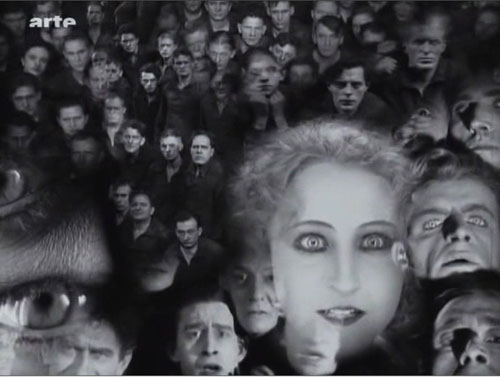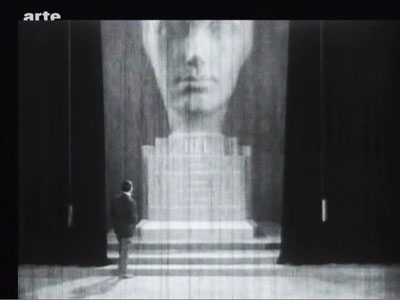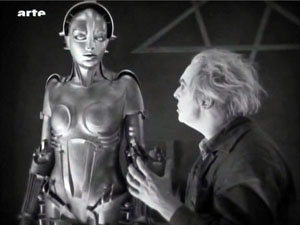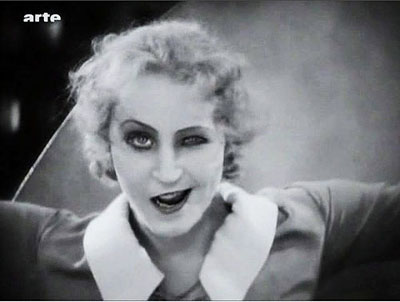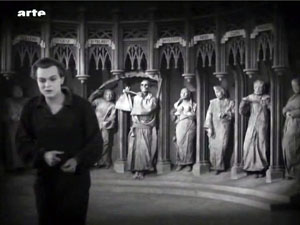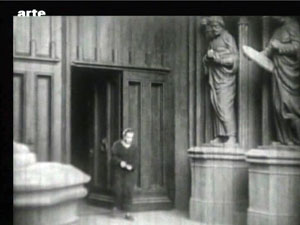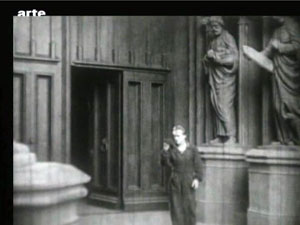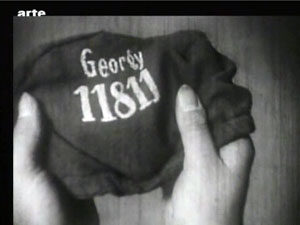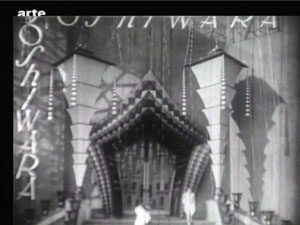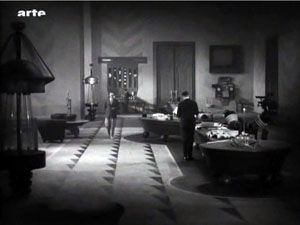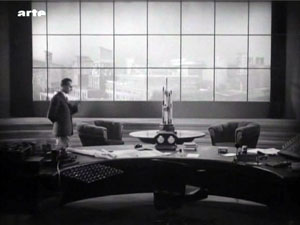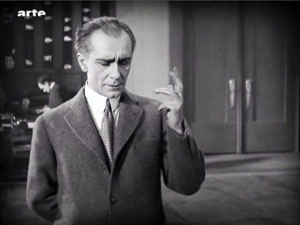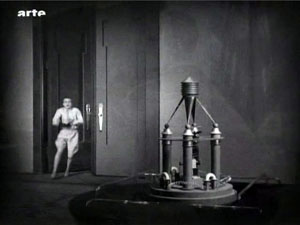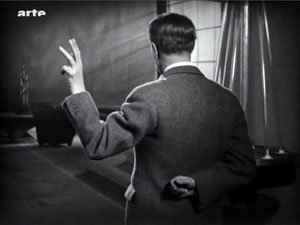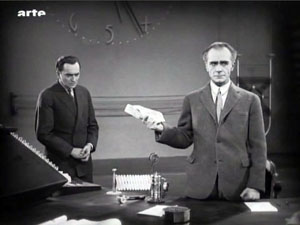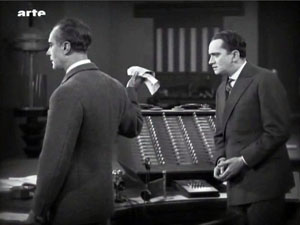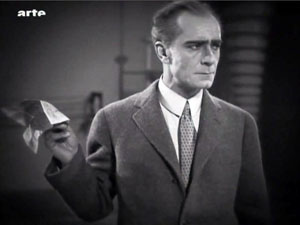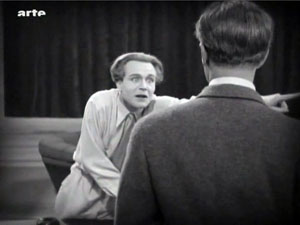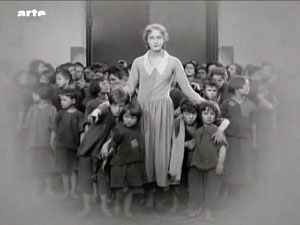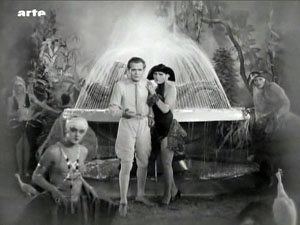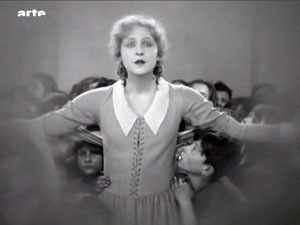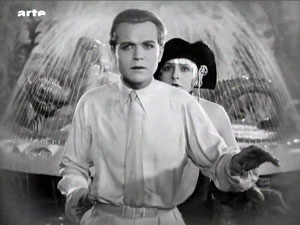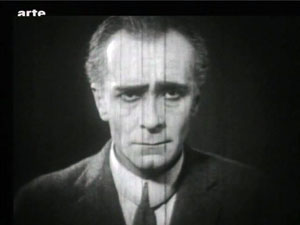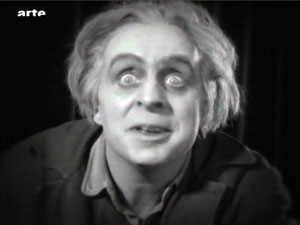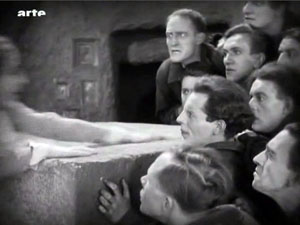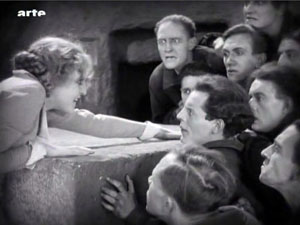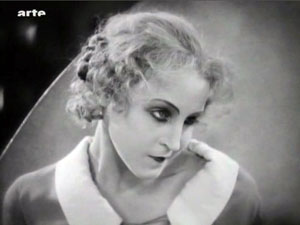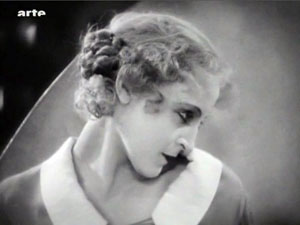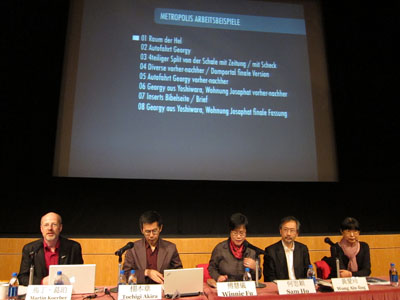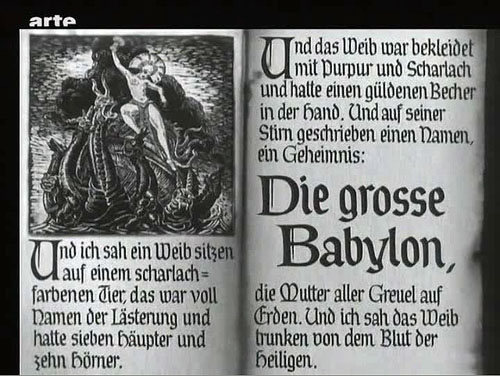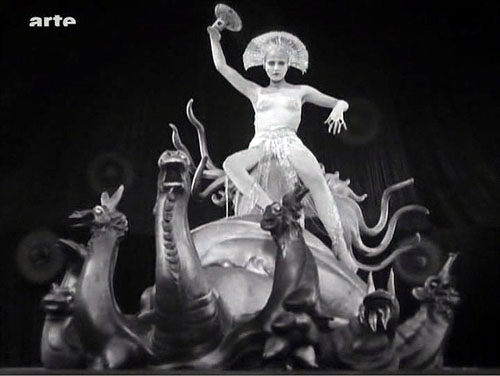Tuesday, April 27, 2010
關於金融支援文化產業振興和發展繁榮的指導意見
銀發〔2010〕94號
各省、自治區、直轄市党委宣傳部,中國人民銀行上海總部、各分行、營業管理部、各省會(首府)城市中心支行,各省、自治區、直轄市財政廳 (局)、文化廳(局)、廣播影視局、新聞出版局、銀監局、證監局、保監局,各政策性銀行、國有商業銀行、股份制商業銀行、中國郵政儲蓄銀行:
為貫徹落實《國務院關於印發文化產業振興規劃的通知》(國發〔2009〕30號)精神,進一步改進和提升對我國文化產業的金融服務,支援文化產業振興和發展繁榮,現提出以下指導意見:
一、充分認識金融支援文化產業發展的重要意義
(一)文化產業快速發展迫切需要金融業的大力支援。金融是現代經濟的核心,在全面建設小康社會、加快現代化建設的進程中,金融引導資源配置、 調節經濟運行、服務經濟社會,對國民經濟的持續、健康、穩定發展具有重要作用。文化產業是國民經濟的重要組成部分,近年來,中央實施重要戰略部署和政策措 施,深化文化體制改革,加快發展文化產業,文化產業呈現出良好的發展態勢,正成為經濟發展新的增長點,在保增長、擴內需、調結構、促發展中發揮著重要作 用。加大金融業支援文化產業的力度,推動文化產業與金融業的對接,是培育新的經濟增長點的需要,是促進文化大發展大繁榮的需要,是提高國家文化軟實力和維 護國家文化安全的需要。各金融部門要把積極推動文化產業發展作為一項重要戰略任務,作為拓展業務範圍、培育新的盈利增長點的重要努力方向,大力創新和開發 適合文化企業特點的信貸產品,努力改善和提升金融服務水準,促進我國文化產業實現又好又快發展。
二、積極開發適合文化產業特點的信貸產品,加大有效的信貸投放
(二)推動多元化、多層次的信貸產品開發和創新。對於處於成熟期、經營模式穩定、經濟效益較好的文化企業,要優先給予信貸支援。積極開展對上 下游企業的供應鏈融資,支援企業開展並購融資,促進產業鏈整合。對於具有穩定物流和現金流的企業,可發放應收賬款質押、倉單質押貸款。對於租賃演藝、展 覽、動漫、遊戲,出版內容的採集、加工、製作、存儲和出版物物流、印刷複製,廣播影視節目的製作、傳輸、集成和電影放映等相關設備的企業,可發放融資租賃 貸款。建立文化企業無形資產評估體系,為金融機構處置文化類無形資產提供保障。對於具有優質商標權、專利權、著作權的企業,可通過權利質押貸款等方式,逐 步擴大收益權質押貸款的適用範圍。
(三)積極探索適合文化產業項目的多種貸款模式。對於融資規模較大、項目較多的文化企業,鼓勵商業銀行以銀團貸款等方式提供金融支援。探索和 完善銀團貸款的風險分擔機制,加強金融機構之間的合作,有效降低單個金融機構的信貸風險。對處於產業集群或產業鏈中的中小文化企業,鼓勵商業銀行探索聯保 聯貸等方式提供金融支援。
三、完善授信模式,加強和改進對文化產業的金融服務
(四)完善利率定價機制,合理確定貸款期限和利率。各金融機構應在風險可控、商業可持續原則的基礎上,根據不同文化企業的實際情況,建立符合 監管要求的靈活的差別化定價機制。針對部分文化產業項目週期特點和風險特徵,金融機構可根據項目週期的資金需求和現金流分佈狀況,科學合理確定貸款期限。 對於列入國家規劃重點支援的文化產業項目或企業,金融機構在有效防範風險的基礎上可適當延長貸款期限。
(五)建立科學的信用評級制度和業務考評體系。各金融機構在確定內部評級要素,設計內部評級指標體系、評級模型和計分標準的過程中,應充分考 慮文化企業的特點,建立和完善科學、合理的信用評級和信用評分制度。要充分借鑒外部評級報告,建立內外部評級相結合的評級體系。要進一步改進和完善業務考 評程式和考核方法,建立專門針對文化產業金融服務的考評體系,將加強信貸風險管理和積極促進文化產業發展相結合,建立正向激勵機制。在落實工作責任和考核 整體品質及綜合回報的基礎上,對中小文化企業的貸款項目,根據實際情況和有關規定追究或免除有關責任人的相應責任,做到盡職者免責,失職者問責。
(六)進一步改進和完善對文化企業的金融服務。各金融機構要增強服務意識,設立專家團隊和專門的服務部門,主動向文化企業提供優質的金融服 務。對於國家重點支援的文化企業和項目,要優化簡化審批流程,提高貸款審批效率。在滿足金融機構授信客戶準入標準的前提下,可對舉辦培訓的企業和接受培訓 的人員予以信貸支援。銀行業金融機構與非銀行金融機構應積極加強合作,綜合利用多種金融業務和金融產品,推出信貸、債券、信託、基金、保險等多種工具相融 合的一攬子金融服務,做好文化企業從初創期到成熟期各發展階段的融資方式銜接。
(七)積極開發文化消費信貸產品,為文化消費提供便利的支付結算服務。各金融機構應積極培育文化產業消費信貸市場,通過消費信貸產品創新,不 斷滿足文化產業多層次的消費信貸需求。可通過開發分期付款等消費信貸品種,擴大對演藝娛樂、會展旅遊、藝術品和工藝品、動漫遊戲、數字產品、創意設計,圖 書、報刊、音像製品、電子出版物、網路出版、數字出版等出版產品與服務、印刷、複製、發行,高清電視、付費廣播電視、移動多媒體廣播電視、電影產品等綜合 消費信貸投放。加強網上銀行業務推廣,提高軟體、網路及電腦服務,設計服務和休閒娛樂等行業的網路支付應用水準。進一步發揮人民銀行支付清算和徵信系統的 作用,加快完善銀行卡刷卡環境,推動文化娛樂、廣播影視、新聞出版、旅遊廣告、藝術品交易等行業的刷卡消費,促進文化市場的繁榮發展。
(八)繼續完善文化企業外匯管理,提高文化產業貿易投資便利程度。便利文化企業的跨境投資,滿足文化企業對外貿易、跨境融資和投資等合理用匯 需求,提高外匯管理效率,簡化優化外匯管理業務流程,促進文化企業提高外匯資金使用效率,降低財務成本,提高我國文化企業核心競爭力。
四、大力發展多層次資本市場,擴大文化企業的直接融資規模
(九)推動符合條件的文化企業上市融資。支援處於成熟期、經營較為穩定的文化企業在主板市場上市。鼓勵已上市的文化企業通過公開增發、定向增 發等再融資方式進行並購和重組。探索建立宣傳文化部門與證券監管部門的項目資訊合作機制,加強適合於創業板市場的中小文化企業項目的篩選和儲備,支援其中 符合條件的企業上市。
(十)支援文化企業通過債券市場融資。支援符合條件的文化企業通過發行企業債、集合債和公司債等方式融資。積極發揮中債信用增進投資股份有限 公司等專業機構的作用,為中小文化企業通過發行短期融資券、中期票據、集合票據等方式融資提供便利。對符合國家政策規定的中小文化企業發行直接債務融資工 具的,鼓勵仲介機構適當降低收費,減輕文化企業的融資成本負擔。對於運作比較成熟、未來現金流比較穩定的文化產業項目,可以以優質文化資產的未來現金流、 收益權等為基礎,探索開展文化產業項目的資產證券化試點。
(十一)鼓勵多元資金支援文化產業發展。發揮保險公司機構投資者作用和保險資金融資功能,在風險可控的前提下,鼓勵保險公司投資文化企業的債 權和股權,引導符合條件的保險公司參與文化產業投資基金。適當放寬準入條件,鼓勵風險投資基金、私募股權基金等風險偏好型投資者積極進入處於初創階段、市 場前景廣闊的新興文化業態。
五、積極培育和發展文化產業保險市場
(十二)進一步加強和完善保險服務。在現有工作基礎上,各保險機構應根據文化企業的特點,積極開發適合文化企業需要的保險產品,並按照收益覆 蓋風險的原則合理確定保險費率。對於宣傳文化部門重點扶持的文化企業和文化產業項目,應建立承保和理賠的便捷通道,對於信譽好、風險低的,可適當降低費 率。加快培育和完善文化產業保險市場,提高保險在文化產業中的覆蓋面和滲透度,有效分散文化產業的項目運作風險。
(十三)推動保險產品和服務方式創新。各保險機構應在現有保險產品的基礎上,探索開展知識產權侵權險,演藝、會展、動漫、遊戲、各類出版物的 印刷、複製、發行和廣播影視產品完工險、損失險,團體意外傷害保險等適合文化企業特點和需要的新型險種和各種保險業務。鼓勵保險公司探索開展信用保險業 務,彌補現行信用擔保體制在支援服務業融資方面的不足。進一步加強和完善針對文化出口企業的保險服務,對於符合《文化產品和服務出口指導目錄》條件,特別 是列入《國家文化出口重點企業目錄》和《國家文化出口重點項目目錄》的文化出口企業和項目,保險機構應積極提供出口信用保險服務,鼓勵和促進文化企業積極 參與國際競爭。
六、建立健全有利於金融支援文化產業發展的配套機制
(十四)推進文化企業建立現代企業制度,完善公司治理結構。按照創新體制、轉換機制、面向市場、增強活力的原則,推動文化企業建立現代企業制 度,引入現代公司治理機制和現代企業財務會計制度,規範會計和審計流程,提高資訊披露透明度,增強財務管理能力,為金融支援文化產業發展奠定良好的制度基 礎。
(十五)中央和地方財政可通過文化產業發展專項資金等,對符合條件的文化企業,給予貸款貼息和保費補貼。支援設立文化產業投資基金,由財政注資引導,鼓勵金融資本依法參與。
(十六)建立多層次的貸款風險分擔和補償機制。鼓勵各類擔保機構對文化產業提供融資擔保,通過再擔保、聯合擔保以及擔保與保險相結合等方式多 渠道分散風險。研究建立企業信用擔保基金和區域性再擔保機構,以參股、委託運作和提供風險補償等方式支援擔保機構的設立與發展,服務文化產業融資需求。探 索設立文化企業貸款風險補償基金,合理分散承貸銀行的信貸風險。
(十七)完善知識產權法律體系,切實保障各方權益。抓緊制定和完善專利權、著作權等無形資產評估、質押、登記、託管、流轉和變現的管理辦法, 根據《中華人民共和國物權法》修訂有關質押登記規定。積極培育流轉市場,充分發揮上海文化產權交易所、深圳文化產權交易所等交易平臺的作用,為文化企業的 著作權交易、商標權交易和專利技術交易等文化產權交易提供專業化服務。進一步加強對文化市場的有效監管和知識產權保護力度,完善各類無形資產二級交易市 場,切實保障投資者、債權人和消費者的權益。
七、加強政策協調和實施效果監測評估
(十八)加強信貸政策和產業政策的協調。制定並定期完善《文化產業投資指導目錄》,發佈更新文化產業發展的項目資訊。加大對符合產業政策導向 的文化企業的信貸支援,對納入《文化產業投資指導目錄》“鼓勵類”的文化產業項目,金融機構優先予以信貸支援,對“限制類”的文化產業項目要從嚴審查和審 批貸款。
(十九)建立多部門資訊溝通機制,搭建文化產業投融資服務平臺。建立文化企業投融資優質項目數據庫,通過組織論壇、研討會、洽談會等形式,加強文化項目和金融產品的宣傳、推介,促進銀、政、企合作,對納入數據庫並獲得宣傳文化部門推薦的優質項目,金融機構應重點支援。
(二十)加強政策落實督促評估。人民銀行各分支機構會同同級宣傳文化、財政、銀監、證監、保監等部門,根據本指導意見精神,結合轄區實際,制 定和完善金融支援文化產業發展的具體實施意見或辦法,切實抓好貫徹實施工作。各金融機構要逐步建立和完善金融支援文化產業發展的專項統計制度,加強對文化 產業貸款的統計與監測分析。人民銀行各分支機構可根據轄區實際情況,建立金融支援文化產業發展的專項信貸政策導向效果評估制度。
中央宣傳部中國人民銀行財 政 部
文 化 部廣電 總 局新聞出版總署
銀 監 會證監會保 監 會
二〇一〇年三月十九日
Monday, April 26, 2010
人物 鄭天儀 董平 中國電影幕後推手
2010年4月26日
「中國拍不出《阿凡達》,不是缺乏技術,而是缺乏創意。從小學到大學,中國教育都很封閉,令你不敢去想太多東西;西方教你解除約束,想一些不敢想的東西,這是天壤之別。」
談到中國電影的國際地位,董平一針見血地帶到社會的核心問題上。
「其實大家也不必以《阿凡達》作標準,它嚴格而言不是電影,是展示高科技實力的宣傳片,沒有根深柢固的文化底蘊在裏頭。過往中國電影受太多人為因素掣肘,審查是自己騙自己,但改變正在醞釀……」
我很難斷定董平的這句雲淡風輕,是預言,還是寓言。
但他應該是最有資格微批當代中國電影前途的人。
董 平,被視為中國民營影視界元老,不時包辦融資、製作、發行工作。1996年涉足電影發行,張偉平和張藝謀合作的第一部電影《有話好好說》就是由董平買斷版 權後發行,一舉拿下4600萬元票房。他隨後更開始投資電影,《鬼子來了》、《孔雀》、《臥虎藏龍》、《赤壁之戰》他的公司都有份投資。
中國電影在浪奔浪流的國際洪流中載浮載沉,他有份推波助瀾。
新自由主義經濟時代的到來,將引發中國電影產業的激變……
董平一身西裝革履,髮絲整齊向後梳,但在襯衫之內,隱藏着一個比五元硬幣還大的玉佩,腰間吊着一個飛鳳遊龍的古玉掛飾。
「都是乾隆的玩意兒。」他邊拿着寶貝在搓揉邊說,隱隱滲出藝術氛圍。
眼前這個資本味濃的商人,原來在北京師範音樂系畢業,專攻美聲,是個感情豐富的男中音,視Pavarotti為終生偶像。畢業後,自覺不適合當老師,才決定投身國際貿易淘金去也。1995年賺到第一桶金後,對藝術念念不忘,決定把電影當作商品,投身夢工場。
「回想這個決定是對的,如果當年繼續音樂事業,相信我的人生沒那麼精彩。」自言跟所有中國當代著名導演稔熟、基本上與當紅一線藝人都合作過的董平,呷着清茶在說。
美聲商人
「其實,當電影拍成之後,已經不是一件藝術,而是一種買賣。」董平用沉實的語調發聲,應該運了丹田勁。記得覃樟柯也曾說,電影拍好後便成了一件獨立的商品,與導演再沒關係,似乎兩人都把電影工業看得透徹。也因為這樣,才能成功把中國電影包裝,輸出海外。
「最 初,一套電影能否開拍,純粹商業考慮,講條件。現在不行,除了條件,還要加上人情、影響力和平台實力,滲透了諸多的人為因素。」董平憶述,過往中國做內容 的風險很大,國家對所謂敏感訊息訂定諸多規定,尤其是電影忌諱特別多,故許多電影不能在內地發行,但現在拜互聯網的功勞,情況已經不同。
萬事起頭難,作為中國首批正式進行電影投資的企業,周旋、談判,應該比唱歌要難吧?
「還好吧,畢竟我做了這麼些年的國際貿易,談判已成了我的強項。哈哈,唱歌是天賦主導,做生意是動腦遊戲。」
花了兩個月不到,董平費盡唇舌,買斷了張藝謀《有話好好說》的版權,給影壇一封介紹信,從此走上「電影推手」的道路。
對比王中軍、張偉平等以銀彈打造商業大片,在中國影壇呼風喚雨的電影大亨,保利華億創辦人董平近年是低調了,只默默地投資文藝片。直至入主香港上市公司文化中國當主席,加上由他投資,姜文、周潤發和葛優合作的《讓子彈飛》將近煞科,滿肚密圈的他才蠢蠢欲動…
如果拿出一份董平十年來的電影投資清單,你會發現他的電影基本上把全世界大大小小的獎都拿遍了,從奧斯卡到柏林,到戛納、威尼斯……當然,要成為商品,就必須有賣點,國際獎項自然是令影片增值的「肥雞針」。
「中國能接納荷里活電影,但荷里活不一定接受中國電影,因為它們的說故事手法仍流於本地化。中國電影要走向世界,必須透過國際獎項,得到中國認同不夠,必須透過國際認可,做一套給世界看的電影才行。」
我不禁無奈地問一個問題,為什麼中國不能有自家的奧斯卡,為什麼要老外用西方的審美眼光來評價我們?
董平斬釘截鐵答:「因為中國還沒有獨立的判斷能力。」我倆相對而望,苦笑一下。
內容是王
深明「內容是王」的董平,開始搜購電影版權建立電影庫,一買就一百六十套,也開始投資電影「自給自足」。他同時也確認,電影只是媒體的一部分,要主導市場,涉獵必須多元化。每年,集團預留1億至1.5億元彈藥,製作二至三齣電影及電視劇,都是中國題材。
「中國老百姓始終喜歡看電影,能夠引起話題的,也以本土電影為主。」董平說。
文革令中國發展停頓了十年,香港和台灣電影無疑為落後的中國影視體系,帶來教科書般的範例借鑒,但近年中國電影電視劇像將破繭而出,反牽了港台潮流,反而是香港電影界失去方向,一蹶不振。
無可置疑是,中國電影的拍攝手法和拍攝文化,正不斷的改變和改進。「五年前,內地主要播香港和台灣的電視劇,現在是反過來了,香港電視黃金時間也會放中國本土電視劇,因為中國影視行業,不斷進步。」
在經濟學上「Made in China」這帶有嘲諷味的標籤正在產生意識形態上的轉變,由中國製造,鼓吹中國創造,甚至中國智造。
不過,董平認為,中國缺乏創意的鬱結,最少十至二十年後才望有變化,但電影行業會較早找到出路。
「世 界上大部分貨品都是made in China,說出了中國並非版權持有人的問題。中國是最大的動漫生產基地,要留意是生產基地不是創意基地,中國的創意太少,生產等於加工,就像 iphone,研究在美國,生產在中國,銷售部門在美國,銷售市場在中國,這反映出什麼?就是最大利益方是美國,最辛苦的勞動者,卻是中國。」
世界工廠的隱憂
他認為,中國電影有條件達到國際水平,只是中國本身的文化差異太大,農民為數不少,「文化人跟沒文化人的比例差異太大」,中國不應只是富起來,而是平衡起來才行。相信華語電影要取得國際的領軍地位,還須琢磨琢磨。
始終,美國仍然是電影系統的創造者,因為Hollywood已經成為最大電影工廠的名稱,流水作業式地生產電影商品,工作流程運作純熟。但據董平分析,中國仍然是由許多個獨立部門在做,成不了系統,故中國仍處於模仿、拷貝的階段,還未成熟到能建立專門的電影工業。
不過,董平希望進一步發揮其推手的功能,正研究買一些外國電影的版權,把故事改編成中國電影,在中國拍攝,就像荷里活成功複製港產的《無間道》一樣。
除了缺乏創意,盜版也是中國電影業面對最大的問題。董平認為,要根治這痛症,必須透過嚴厲立法,否則只有病入膏肓。
「我用2000萬元拍一齣電影,你用1萬元就能把它盜版,誰來保護電影投資人?立法是遲早的事,懲罰的準則是,你偷了一齣2000萬元投資的電影,等同偷取2000萬元一樣。當然立法仍有人盜劫、有人強姦,但至少能起阻嚇作用。」
談到中國電影,不能不提核心領軍人群—中國導演。我感受到,以往中國導演的自我標籤淡化了,效法西方的個人主義抬頭,董平對這現象有何看法?
「對,五年前市場還喜歡用第五代、第六代來標籤導演,第五代只拍《紅高梁》等藝術片,第六代拍商業片,但現在已不合時宜,因為大家都市場化了,張藝謀早在拍商業片了!」他認為,隨着全球化和市場融合,未來內地導演和香港導演已不會區分,統稱中國導演,中國電影。
但今天中國電影界最紅的導演如張藝謀、陳凱歌,近年炮製的《臥虎藏龍》、《英雄》、《無極》、《滿城盡帶黃金甲》等所謂當代中國電影,卻找不到半點當代中國面貌,富麗堂皇的畫面幾乎都是為進軍荷里活而精心鋪排。
「我入行時,張藝謀他們已經很紅,但中國電影市場則在最糟糕之時,現在中國電影已被另眼相看了,當然市場有很大挑戰,但我不相信追求藝術,一定要放棄票房。當中國人文化知識水準愈來愈高的時候,可能我的影片會有愈來愈高的票房。」
在中國傳媒娛樂行業,董平確曾以讓人眼花繚亂的資本運作手段見長,但與一眾無寶不落的商人相比,董平顯然多了一點藝術的使命感,難怪他經常被評價「像藝術總監多於總裁。」
問董平最愛的電影,他想也不想即吐出《教父》(The Godfather)。
我說與張藝謀、陳凱歌、姜文等中國導演稔熟的董平,也算是中國民營電影教父,他耍賴說:「不是教父,是推手。」
視美國發行藝術片起家的Miramax為發展目標的董平,以教父式的口吻說,那刻他確實有點馬龍白蘭度的影子。
文 鄭天儀
Wednesday, April 21, 2010
城市專題 楊天帥
2010年4月22日
色即是空 空即是惜──記香港色情影院
2007年,政府為新填海工程清拆皇后碼頭。打着集體回憶的旗號,各團體軟硬兼施,紛紛抗議。簽名、露宿、靜坐、絕食,連周潤發也親身到場簽名支持。
2009年,政府為建高鐵香港段清拆菜園村,社會發展與文化保育再次發生衝突。不少人攜了相機去菜園村拍照,為正在消失的老新界留念。也有不少媒體訪問當地居民,蝸牛婆婆的故事令不少市民潸然淚下。
一 度風行香港的色情影院近年紛紛結業。沒有鐵路在其地下興建,填海工程與它也扯不上邊。無人殺而自殺的伯仁無人關心。坦白說,我只去過皇后碼頭三次,高鐵事 件前從未聽過「菜園村」三個字。色情影院哩,每天我卻總要在它的大門前既緊張又興奮地瞥一眼,一讀那些似懂非懂的影片名字……
末代色情影院
在 柯士甸站下車,走五分鐘來到官涌街。算不上寬闊的道路兩旁泊滿汽車。街上有這樣一間小店,店面不到一百方呎,匾額上有海灘、酒杯和士多啤梨圖案,上面寫 道:「官涌戲院 中午12:30起不停播映 一張戲票 全日任睇」。戲院門前停一個售貨架,上面全是20元一張的色情光碟和錄影帶。唯一的女職員除售票 外,亦兼做播放工作。「上午10:45開場,晚上11:30完場。早場15元,看一齣,12:30後全日40元任睇。」她淡然道。
放映時間表是這樣的:
12:30 鹹鹹濕濕誘鬼你塞
1:31 我很寸可是我很淫亂
2:29 色情快餐車
放映時間以分鐘為單位。這是由於影片連續播放,毋須考慮觀眾出入場時間的關係。
我買了一張戲票。那不是電腦票,而是早已印好,一張張撕出來的老式票,上面印有日期和號碼。「日活院線有限公司 翻印必究」,票的一隅寫道。影院與店面只一破布相隔,從布外可以聽到女優的喊叫聲。
進入戲院,裏面約有二十人,一律為男性。不少年過半百的叔叔正聚精會神地盯視熒幕。也有約三四十歲的,入場似乎為冷氣多於觀戲。院內煙味甚濃,畫面質素很差。影片講述主角屋內鬧鬼,兩隻男鬼赤條條地走來走去。鬼們的身型像舒適寶海報中的郭富城。
從五十年代說起
官涌戲院是全港唯一一家現存的色情影院。我之所以撰文紀念,只因回憶於我來說非常重要。活生生的人的生活痕迹是美好的、有味道的──即使那影片不是3D,不是高清,只是劣質錄影帶,連女優的面容都無法清楚看見。
香 港早於五十年代已輸入色情影片。當時的社會風氣比今日保守得多,雖說是「色情」,卻不能與現在的同日而語。那只不過在其中有接吻、愛撫、露胸等鏡頭而已, 主要仍以劇情為賣點。中文大學日本研究系教授吳偉明認為,即使到了七十年代,大批以性為號召的本土「艷情片」或「風月片」(如呂奇與李翰祥的作品)也不過 是賣弄風騷,大膽程度有限。以現今的標準來看只屬「二級B片」。
四十五歲的網誌作家阿四以前曾是「色情電影」的坐上客。他亦表示,早期它們與一般電影其實分別不大。
「票 價和一般電影沒分別,不會較便宜,也不會較昂貴。」他說。「等入場時也和看普通電影無異。」他憶起以前在海運戲院看屬於主流的色情電影《偷試雲雨情》時, 還可見到女性結伴入場觀看。類近的知名色情電影如《蜜桃成熟時》、《艾曼妞》、《碧麗莎的情人》等,情況亦大致相同。
八十年代開始,日本向 香港及亞洲各地大量輸出色情片,並取代歐美,成為香港上映色情片的最大來源。吳偉明認為1980年代前半的日本軟性色情片雖不一定比歐美大膽,但意淫挑逗 程度較優勝,而且同是東方人面孔及胴體,加上粵語配音,令香港觀眾更為受落。及至九十年代,本土色情片雖大行其道,但日本作品在港上畫的數目卻不減反增。 若干年份日本色情片更佔在港公映電影總數的半數以上。此外,今日仍為人津津樂道的「一票多片」模式,以及色情專門院線制度,其實亦引入自日本。由此可見, 當年日本色情電影業在港的影響力是何其巨大。
踏入全盛時期
或許不少七十後男性對三大色情電影院線名稱「日 活」、「巨人」與「奧斯卡」早已耳熟能詳。據吳偉明所言,它們都是一些殘舊的中小型戲院,大部分座落在舊區(如元朗、荃灣、筲箕灣、觀塘等)或旺角的橫街 後巷(如官涌戲院)。三條院線中,今日僅存日活院線。它亦為三者中最知名,其名字取自兼拍成人電影的日本五大電影公司之一日活株式會社。
曾 經紅極一時的色情影院眾多,較重要的有油麻地的油麻地戲院、太子的太子戲院、深水埗的星輝戲院、西營盤的金陵戲院、銅鑼灣的東京戲院……篇幅所限,無法逐 一列舉。那個年頭,色情影院如雨後春筍般湧現,高峰時期全港數目達四十所以上,「梗有一間喺左近」。少男與叔伯們心儀的那些影院名字實在是無法盡錄的。
真 正的黃金時期則始於1987年11月11日—那是政府成立電影三級制的日子。今日常有電影人投訴其作品被無故評為三級,最近「無除衫無除褲」的彭浩翔作品 《志明與春嬌》便是一例。但與之相反,三級制本來可說並非為限制不雅作品而是為推廣不雅作品而設的。該制度成立後,許多原來必須刪剪甚至禁播的電影得以重 見天日,以「原汁原味」招徠觀眾。新法例實施兩個月後,二百部送檢影片內即有逾半數為三級影片。1992年,著名影評人李焯桃在本報專欄「觀逆集」中亦曾 撰有一篇題為〈三級標記持續吃香〉的文章。社會對色情電影需求之殷切由此可見一斑。不過色情始終還是有底線的。「四仔」在本土戲院一直以來始終是「違禁 品」。2001年12月就曾有金陵戲院因播映四級電影而遭檢控的報道。據聞該戲院當年預備了兩部投影機,平時用一部放「四仔」,倘發現疑似「放蛇」的可疑 人物,便立刻改用另一部投影機播放三級片。只是此佚事的真偽大概已無從稽考了。
推出長者卡買一送一優惠
2000年東京戲院結業;
2006年金陵戲院結業;
2007年太子戲院結業;
2008年星輝戲院結業;
自此全港只餘官涌一家色情影院。
衰退的原因無他,不少人都能猜到──日本AV既推出VCD、DVD,還能隨意下載(儘管非法)。當躺在家裏就能免費看高清時,誰還會花錢到戲院看劣質錄影帶?於是這個行業便只有沒落的份兒。
對於漸次消逝的色情影院,是否覺得可惜?
「不可惜。根本就不可能返回以前要付費才看一場『鹹片』的年代。」阿四道。
2006年色情戲院每天還有約七十多名觀眾,到2008年便只餘下五十多名。2010年我拜訪官涌的這一天,只有二十多名。
一天一票,顧客可自由出入影院,觀影至肚餓外出填肚後再度酣戰亦無妨;持長者卡人士,二人同行一人價錢。哪個都阻止不了一落千丈的色情影業生意。
對,歷史那偉大的進軍是誰都阻止不了的。阻止不了的事還有可惜可言麼?
「很多『行街』營業員會來涼冷氣,一個《東方日報》的攝記也是常客(應是在工作與工作間找個歇腳地)。」售票小姐道。傳聞還有人會入場「刨馬經」、睡午覺、捉象棋……今日的色情影院儼如一個退休老人。
家母說,人總是在事物將要失去時,才懂得珍惜。菜園村亦然,皇后碼頭亦然,誰曾經在清拆前關心過它們?
「色情影院確是香港男性的集體回憶,只是礙於話題令人有低俗之感,是以主流媒體報道甚少。」吳偉明道。
「我想看『鹹片』在香港世俗眼光來說是較低層次的回憶吧,香港人還是比較保守的,就算關心也不會拿出來討論!」阿四道。
我則覺得它沒有被提出,是因為它沒有政治利用價值。或許這看法太過「陰謀論」也未可知。
希望讀過這篇文章的男人,下次說到集體回憶這四個字,也請記住,曾經有這樣一類型戲院,為廣大同胞付出過半世紀的努力:一票全日無限入場、時間表是為每分鐘計算、播的不是菲林而是影帶、分明不是色情電影卻要改個色迷迷的名字……
文 攝 楊天帥
 |  |  |  |
Saturday, April 10, 2010
媒體與戀舊癖 .林沛理
| 媒體是設置香港社會議題的原動力,它們製造了《歲月神偷》和香港精神的論述。 |
窮 一生精力研究權力怎樣支配生活的法國思想家福柯(Michel Foucault)說過,我們在甚麼時候談論甚麼話題,並不是隨隨便便、偶然發生的事情;而往往是在不知不覺之中受人擺布的結果。港產片《歲月神偷》在短 短一兩個星期之內,由一個無人問津的「非故事」(non-story),搖身一變為全城談論的「熱門話題」(talk of the town),正好顯示了媒體怎樣透過行使其議程設置的權力(agenda-setting power),將事件界定為「話語」(新聞)加以報道。當中又涉及對所謂「香港精神」的詮釋,以及「懷舊」(nostalgia)與「戀舊 癖」(fetishism of the past)的基本差異,值得我們深思。 媒體口徑一致地稱《歲月神偷》「揚威德國」,所指的是影 片在柏林影展得到一批十四歲或以下的青少年青睞,頒給它一個名為「新世代最佳影片」的水晶熊獎。眾所周知,柏林影展最重要的獎項是最佳影片的金熊獎——張 藝謀一九八七年以《紅高粱》奪魁,被譽為華語電影在西方世界的「創世紀」。在講求論資排輩的德國,「新世代最佳影片」的評審由十四歲或以下的青少年擔任, 單是這一點,就說明了這個獎的份量和重要性。 《歲月神偷》得獎,最喜出望外的除了導演羅啟銳和監製張婉婷之外,就是撥款三百五十九萬港元 (約四十六萬美元)資助這套電影、由香港特區政府商務及經濟發展局推出的「電影發展基金」。「電影發展基金」至今合共資助十四部港產片,其中已上映的三 部,總票房收入不足三百五十萬港元。它亟需的,是一次漂亮的勝利,即使只是精神上的勝利也好。於是「電影發展基金」把《歲月神偷》得獎,當做一宗大新聞那 樣公布和發放,是完全可以理解的。 結果「電影發展基金」如願以償,這當然得力於傳媒的「吞餌上釣」(take the bait)。《歲月神偷》得獎的消息在上個月二十二日公布,那天剛巧是一個平靜無事的週日,幾家電視台的新聞都不約而同地用這宗新聞做其中一則「頭條」。 這一下子製造了「《歲月神偷》揚威柏林」是大新聞的既成事實,也反映了近來飽受批評的電視新聞仍然是設置社會議題的原動力。的確,這些年來,缺乏深度、視 野和公信力的電視新聞,在告訴觀眾「怎樣想」(what to think)這方面可說是一敗塗地,但它在告訴觀眾「想些甚麼」(what to think about)這方面,卻做得異常成功。 接著的一個星期,本地印刷媒體一哄而起,有關《歲月神偷》的正面報道和熱情推介紛至沓 來。影片還未正式公映,彷彿已在頃刻之間變成經典(instant classic)——一套弘揚和體現百折不撓、自力更生的香港精神的香港電影。這種香港精神萌芽於二次大戰之後至六十年代的艱苦歲月,經歷半個世紀之後到 今日已經奄奄一息。諷刺的是,這種有關《歲月神偷》「內在價值」的詮釋,只是在影片「揚威柏林」之後才成為本地媒體爭相認可的主流論述。在此之前,影片早 已安排過招待新聞界與文化界的試映會,但反應冷淡。這究竟反映了甚麼,是德國那幾個十來歲的小伙子目光如炬;還是香港的文化人和新聞媒體的崇洋和「隨群心 理」(herd mentality)太犀利,不加思索地以為只要能夠在國際影展獲獎的,就是「好東西」?如果這是個符合時代精神(zeitgeist)的「好東西」,那 就更妙不可言,因為我們可以順手拈來,用它來解釋那顯而易見的社會現象。 《歲月神偷》 電影當然不是《七十二家租客》和《花田囍事2010》一類的爛片,但它的感傷主義(sentimentalism)跟香港電影最需要的批判性寫實主義 (critical realism)卻不可混為一談。對羅啟銳來說,生命一切的苦難都是對生命的考驗;社會所有的問題都是對人格的磨練。他沒想到的是私人的事也是政治 (the personal is politics),因為極私人的領域——家庭——也往往呈現出社會、文化和經濟的權力關係和利益矛盾。對舊香港的這種權力關係和利益矛盾,以及它們的文 化和社會根源視而不見,就不只是懷舊,而是一種自欺欺人的「戀舊癖」。 |
電子遊戲化的電影 .林沛理
| 《阿凡達》所代表的,是電腦技術對電影藝術的「判敗擊倒」,是好萊塢「去電影化」。 |
| 林沛理,文化雜誌《瞄》(Muse)主編,《信報》及《南方都市報》專欄作家。著有評論集《影像的邏輯與思維》、《香港,你還剩下多少》及《能說「不」的秘密》(次文化堂出版),最新的一本書是《破謬.思維》(天窗出版)。 毫 無疑問,跟七十年前的《大國民》(Citizen Kane)一樣,《阿凡達》註定會成為電影發展史上的一座里程碑。可是,跟奧遜‧威爾斯(Orson Welles) 開山闢地的傑作大大不同,卡梅隆轟動全球的賣座巨片在提升電影表現力的同時,並未能充分發揮電影作為一門兼備大眾娛樂功能的藝術形式的獨特優勢。剛剛相 反,機關算盡、令人大開眼界,甚至目瞪口呆的《阿凡達》提醒我們,電影首先是商品和娛樂,然後才是藝術、言志、批判,或者其他東西。 沒有 人可以否認《阿凡達》想像力的豐富,以及它在製造視覺震撼方面摧枯拉朽的能力。有論者甚至認為,《阿凡達》徹底改變了我們的觀影經驗與我們對「甚麼是電影 力有所及」(what cinema is capable of)的期望。問題是《阿凡達》的優點也映照著它的缺點,依附著它的「能」是它的「不能」。它用最尖端的電影科技去傳遞反科技的信息。它義憤填膺批判帝國 主義的侵略,卻對戰爭和殺戮的奇觀,有一種童稚式的好奇和著迷。它歌頌大自然的智慧,但又掩飾不了它對機械的崇拜。說穿了,整套電影不過是一場用令人嘆為 觀止的視覺效果包裝而成的意識形態的騙局(ideological deception)。 《阿凡達》雖然用上了最先進的3D拍攝技術, 但它真正追求的其實是一種電影的原始狀態。在這種原始狀態之中,電影被還原為奇觀。電影由發明的一刻開始,就與奇觀產生了親密的血緣和臍帶關係。法國發明 家盧米埃爾兄弟拍於一八九五年的《火車到站》標誌電影的正式誕生;而它亦製造了影史上第一個奇觀——火車頭衝向觀眾。自此電影作為一種創作和大眾娛樂模 式,它承載、展覽和製造奇觀的功能不斷被強調,也越來越精進;到《阿凡達》,電影與奇觀終於被劃上等號。 就其所提供的觀影經驗而言,與其 說《阿凡達》是電影,倒不如說它是製作不惜工本、視覺元素豐富和視覺效果迫真的電子遊戲。在這部據報耗資超三億美元拍成的電影裏,奇觀變成了量度一切的標 準,人不過是奇觀的一個渺小、微不足道的構成部分。主角阿凡達深入敵方、屢屢犯險,為的是要完成一個艱巨的任務。隨著劇情的發展,這場「殺敵除奸、完成任 務」的「遊戲」的難度(level)會不斷提升——主角的敵人會變得更厲害、更恐怖和更難以應付。 這種電子遊戲式的規則完全駕馭劇情的發 展——主角以抗敵的方式清除障礙,進而挑戰「遊戲」的難度,成為推展情節的「原動力」。如此一來,電影的故事與人物不過是可有可無的微末枝節,而非觀影經 驗的重要構成部分。一切有關人與神、美與醜、環境與發展的衝突的探討都只是要提供一個冠冕堂皇的藉口,好讓那些精心設計的電腦特技和立體高清拍攝技術可以 大派用場。我們甚至可以說,《阿凡達》代表的,是電腦技術對電影藝術的一次「判敗擊倒」(knockout)。 好萊塢電影這個「去電影 化」的發展趨勢已經無法逆轉或者挽回,這一點從這類電影的全球賣座可見一斑。問題是電影從來不只是一種大眾娛樂模式,同時也是任重道遠的社教化媒介。倘若 電影提供的經驗越來越接近電子遊戲,它會導致甚麼非預期性的社會後果,是個值得關心和探討的課題。 社會科學的基本課題,是「社會何以可 能」(How society is possible)。社會由眾多理性和互異(heterogeneous)的個體組成,社會的成員必須接受「社教化」。社教化指親社會行為和情感培養,使 個體在群體內採取建設性的交往方式。本來,電影跟家庭、學校、朋輩、媒體和宗教一樣,都是主要的教化媒介。觀眾尤其是年輕人透過看電影的集體經驗,培養出 羞恥、犯罪感、同情心、對社會制裁的敏感,以及對背叛者施以懲罰的期待等種種親社會的情感。 可是發展到今日,電影作為一種社交活動已經變 得有名無實。從本質而言,看電影跟一個人玩電子遊戲機或者紙牌遊戲來排遣寂寞其實沒有太大分別。在內涵上,今日的好萊塢大製作普遍缺乏最起碼的社會內容, 而只一味將主角的敵人「他者化」(《阿凡達》裏面的人類甚至不叫人類,而叫「天空人」),以及為觀眾提供即時的滿足。看這類先進而原始、既文明又野蠻的電 影長大的一代,自然不善於表達自我和與別人溝通。他們註定了是低EQ的反社會一代,這一點幾乎可以斷言。 |
Wednesday, April 7, 2010
Metropolis unbound
 open printable version
open printable version Fritz Lang has created a lot of pretty pictures and has discovered the astonishing talent of Brigitte Helm. I cannot blame him for not being able to cut the quantity of ideas in individual scenes mercilessly enough (the water catastrophe, the duel), but instead repeatedly trying out new lighting and angles. This time the film’s qualities lie precisely in these efforts: and if the viewer knows how to make the best of something, he will derive pleasure from these images.
Rudolf Arnheim, review of Metropolis, 1927.
Along with La Roue and The Battleship Potemkin, Metropolis (1927) is one of the great sacred monsters of the cinema. Many versions circulate, and restorations never seem to stop. A beautifully restored, though incomplete, version was premiered in Berlin in 2001. This is the basis of the most authoritative DVD releases. By now, however, everybody has heard about the 2008 discovery of a significantly longer version in Argentina, a 16mm preservation copy drawn from a scratch-infested 35 nitrate original.
Since 2008 a team at the Friedrich-Wilhelm-Murnau-Stiftung has been at work adding material from the Argentine version to the earlier one. Kristin and I have written earlier entries (here and here) tracing the progress of the restoration, and the team have produced a detailed website explaining their work. The result made its world premiere at the Berlin Film Festival earlier this year, and an exhaustive exhibition about the film has been running at the Deutsche Kinematek in Berlin.
Now I’ve seen it, at a screening during the Hong Kong International Film Festival. Frank Strobel, a member of the restoration team, conducted the Hong Kong Sinfonietta, and another collaborator, Martin Koerber, curator at the Deutsche Kinematek, was present to discuss the restoration process. A handsome booklet, cosponsored by the Goethe-Institut of Hong Kong, provided a lot of background. The film was projected digitally, but at very high resolution and looking quite crisp. I had a front-row center seat. I had a swell time.
Metropolis has never been my favorite Lang of the period, but this version makes the strongest possible case for the film. It’s hard to dislike its shameless, preposterous ambitions, its stew of biblical and modern ingredients, its bold architectural vistas, and its trancelike characterizations. Also, people running crazily about in gargantuan spaces can usually hold your interest.
I just met a girl named Maria
All [the American editors] were trying to do was to bring out the real thought that was manifestly back of the production and which the Germans had simply “muffed.” I am willing to wager that “Metropolis” as it is seen at the Rialto now is nearer Fritz Lang’s idea than the version he himself released in Germany. . . . There was originally a very beautiful statue of a woman’s head, and on the base was her name–and that name was “Hel.” Now the German word for “hell” is “hoelle” so they were quite innocent of the fact that this name would create a guffaw in an English speaking audience. So it was necessary to cut this beautiful bit out of the picture . . . .
Randolph Bartlett, The New York Times, 13 March 1927
The new version gives the film a better narrative balance. Somewhat surprisingly, the plot hinges on one of the oldest and simplest narrative devices: mistaken identities. The overlord Fredersen engages the crazed scientist Rotwang to create a mechanical Maria who will lead the workers astray. Rotwang takes the occasion to avenge himself on Fredersen by having his robot urge the workers to destroy the machines. Two Marias, then–actually more, if you count the robot Maria’s incarnation as the Whore of Babylon in the Yoshiwara Club.
Thanks to the Argentine footage, we now know that another major character doubling involves Freder. At the start of the version we all know, Freder is visited by Maria and a flock of children. Upon seeing her radiant charity, he becomes suddenly convinced that he must join the oppressed workers, his “brothers and sisters.” Helping them has become his destiny. He gains an ally in Josaphat, an employee whom his father has brusquely fired. Descending to the cavernous machine halls, Freder switches identities with Georgy, a worker who returns aboveground to live Freder’s life. Freder wants him to go to Josaphat’s apartment, where they will meet. But the Thin Man, a long, leering hireling of Freder’s father, is charged with trailing Freder.
Stretches of the Thin Man subplot are missing from the previous version, but now we can see that Georgy/ Freder is a sort of early counterweight to the Maria/ Maria parallels. As in the latter case, the switch leads to misunderstanding, with the Thin Man following Georgy to the club and eventually to Josaphat. The Georgy substitution also allows Harbou and Lang to introduce the Yoshiwara Club early, but teasingly, in a rapidly dissolving montage. Only later will we get a good look at the delicious degeneracy inside.
As Martin Koerber indicated in several remarks, the older, most common version of Metropolis turns it into a science-fiction film, since it puts the robot Maria at the center of the plot. Just as important, though, is Freder’s plan for overturning class oppression, something fleshed out in the Georgy/ Josaphat material. Other new footage puts the relationship between Fredersen and Rotwang in a new light. We now see that Rotwang was in love with Fredersen’s wife Hel, and he has constructed not only a huge bust of her but also a “mechanical man,” outfitted with a distinctly female anatomy, as a sort of Hel substitute.
Fredersen diverts Rotwang’s plan to the purpose of mimicking Maria. So we get another doubling: Freder’s mother Hel becomes the firmware for the robot Maria through the machinations of two father figures. (Freder will kill one and redeem the other.) In all, the new footage yields a play of eerie Freudian substitutions.
The 2010 restoration also establishes the film as consisting of three large-scale movements. The first section, “Prelude” (Auftakt), runs a bit more than an hour. It shows Freder joining the workers and his father planning to have the Thin Man follow him. This part also introduces Rotwang, establishes Fredersen’s order to make a robot Maria, and ends with Rotwang’s capture of Maria. A second part, called “Intermezzo” and lasting about thirty minutes, is devoted to intertwining the Freder/ Josaphat plot with the creation of the robot Maria. The section more or less climaxes with a demo of the new Maria, dancing sexily at the Yoshiwara.
In “Furioso,” everything builds to a climax across a remarkable fifty minutes. The cloned Maria leads the workers to destroy the machines, fulfilling Rotwang’s plan to avenge himself on Fredersen, while the real Maria escapes from Rotwang’s compound during a fight between Rotwang and Fredersen. (We’re still lacking some of this footage.) At the same time, Freder and Josaphat converge on the underground city. The workers’ smashing of the machines triggers a flood from which the children must be saved. At the finale, during a hand-to-hand struggle with Freder, Rotwang falls to his death. There follows the famous epilogue in which Freder, “the Mediator,” must bring together hands (the foreman Grot) and head (the capitalist Fredersen).
Fluidity and freedom
This delirious fable is rendered with unrelenting zest. Lang has now perfected his breathless version of silent-film narration. He relies on simple, immediately graspable compositions, rapid crosscutting among different plotlines, and a dynamic approach to analytical editing.
In the late 1920s, many American films became more heavily dependent on intertitles; it’s as if directors were anticipating talkies. But of Metropolis’s over 1800 shots, I counted only 26 expository titles and 156 dialogue titles—in a film running nearly 2 ½ hours. Lang plunges us into each scene with no fuss, and once we’re there, a smooth continuity carries us from shot to shot. Confronting the seven deadly sins in the cathedral, Freder turns away, twisting Georgy’s cap in his hands as he exits the frame.
Cut to the main area of the cathedral, and Freder is still twisting the cap as he enters the frame. (Like other shots from the Argentine version, this is slightly reduced because of the 16mm source.)
He lifts the cap, and we get his point of view on Georgy’s name and number.
Cut to the Yoshiwara nightclub closing, as Georgy steps groggily into the street.
Here the new footage lets us see that Lang is exploiting the sort of verbal and imagistic hooks he had developed in earlier films: from Georgy’s cap to Georgy himself, with no need of an intertitle to take us to the new scene.
Lang’s freedom of camera position is typical of late silent cinema, but he deploys his angles with characteristic precision. As usual in Europe, Hollywood-style continuity isn’t completely adhered to—there are some crossings of the 180-degree line—but Lang is careful to keep us oriented to the action through eyelines. This allows great flexibility in camera placement.
Fredersen is dictating to his secretaries while Josaphat is monitoring prices. A vast establishing shot shows all of them.
Fredersen’s pacing around his office allows Lang to introduce a new area around the window and the desk.
Now pacing in the center of the office, Fredersen pauses in his dictation and Freder bursts in behind him.
But Fredersen, who’s already holding up one hand as he speaks, simply twists his wrist, and this silences his son.
The shot approximates Freder’s point of view, but Lang gets a bonus from it. The sharp change of angle makes the imperious hand (and not, say, Fredersen’s expression) the compositional focus of the shot. In fact, this sort of hovering hand will become part of the characterization of Fredersen, and Lang will stress it through, once more, energetic changes of angle.
And still later, the framing will spotlight Freder’s pointing finger by pushing it to one zone on the far right of the shot.
Lang’s concise handling of such small actions forms a delicate counterbalance to the mass movements elsewhere in the film. Perhaps for him, both gestures and crowd scenes are merely two ways of creating a geometry that can activate every area of the screen.
The carefully controlled freedom of spatial construction is facilitated by one of Lang’s favorite tactics: shooting from directly on the axis of character interaction. (No, Wes Anderson didn’t invent this.) Lang in effect sets the camera between the two characters so that they stare out at us, as if mesmerized. The technique is most memorable in the scene in which Freder is confronted by Maria and the children.
Again, though, the Argentine material brings more instances to our attention.
Putting the camera on the axis allows Lang leeway in changing his angles. From a shot on the center line, you can cut to pretty much any other area of space.
Lang’s crisp visual narration comes to a climax in the well-named Furioso section. As the action ramps up, the characters rush from spot to spot, hurling themselves into the frame and then abruptly halting to hold the composition.
The extreme case is the robot Maria, whose head and limbs jerk puppetlike from one position to another.
In all, Lang’s precise, almost diagrammatic visual style rushes us through the film’s wild plot and dazzling architecture. An emblem of precision in the service of slightly demented material might be that memorable close-up of the robot Maria: One eye staring out normally, the other half-closed, and the mouth half-twisted in a leer, as if the circuitry in the skull was failing.
A little encyclopedia
Martin Kroeber, Togichi Akira, Winnie Fu, Sam Ho, and Wong Ain-ling discuss preservation and restoration at the Hong Kong Film Archive.
In a Q & A after the screening, Martin Koerber and Frank Strobel shared information about the version. They and their colleague Anke Wilkening could publish a whole book about the restoration, but here are some highlights, drawn as well from Martin’s comments at a lengthy seminar at the Hong Kong Film Archive.
*Sources for information about the premiere version include a copy of the script (helpfully marked with reel ends and calculations about running time), censorship cards recording the credits and intertitles reel by reel, Gottfried Huppertz’s musical score, and thousands of production stills.
*Using these materials, earlier researchers were able to create a sort of mosaic of the version that premiered in Berlin in January 1927. The resulting study film embedded long swathes of blank footage as place-holders. The fact that the Argentine shots fitted in neatly proved the validity of that edition. This study film may be ordered on DVD at nominal cost by educational and research institutions.
*What’s still missing? Some shots in the Argentine version may have been censored; we’re missing a bit in which Georgy, at liberty in a cab, sees a woman baring her body. Also lacking is nearly all the fight between Rotwang and Fredersen, which enables Maria’s escape. In addition, the Argentine print lacks a scene showing a monk preaching in the cathedral, which yields some apocalyptic images.
*If the film plays fast for contemporary tastes, don’t blame the restorers. This version runs at 24 frames per second. Actually, for the 1927 premiere the film was run even faster. The score includes passages accompanying missing footage as well as over a thousand synch-points for specific onscreen action. On the basis of this evidence, it seems that the film was designed to run at abotu 28 frames per second. This reminds us that silent-film running speeds were far from standardized, and they sometimes exceeded the 24 fps that would be established for sound film. (For more on this matter, go here and scroll down a bit.) In addition, Frank mentioned that in theatres with orchestras, the conductor could regulate the speed of the film with a dial set into the podium.
*Why insert the cropped 16mm footage in such obvious fashion? Couldn’t the framelines be adjusted to match the surrounding 35mm material? Yes, but this slight blowup of the footage would falsify the shot scale of the original footage and not match comparable shots in the 35mm footage. Moreover, Martin pointed out that because not all the scratches and fuzziness of the 16mm material could be purged, it’s better to let these stand stand out somewhat as evidence of the vagaries of film history–like leaving some damage visible in historic buildings.
*Why is the restoration in black and white, since most silent film restorations are in color? Lang was opposed to tinting and toning, so METROPOLIS premiered in black and white. This caused a debate among critics, some of whom considered it a promising departure from contemporary practices of coloring scenes. The tinted versions that one can occasionally see are likely export versions colored at the request of distributors in particular markets.
*Although future screenings of the 2010 version are to be accompanied by other ensembles devising their own music, there’s a powerful case for retaining Huppertz’s original score. It reflects the filmmakers’ intentions, and its Wagnerian romanticism and modern rhythms are enjoyable simply as music. Just as important, Huppertz designed his score around leitmotifs that, as in opera, can call to mind characters who aren’t onscreen at the moment.
*Metropolis, Martin argued, is too often considered simply a late Expressionist film or an early science-fiction effort. Now we can see that it’s much more: “a compendium of everything in the air in 1927 Germany.” It brings together political ideas, debates about class society and urban life, current trends in the fine arts, acting styles, and cinematic experiments. It owes a great deal to the “monumental” films of the late 1910s, such as Joe May’s Herrin der Welt (1919), but it’s also a synthesis of what filmmaking had become since then. “It’s a little encyclopedia of 1927 cinema. . . . There’s something in it for everybody.”
To see the restoration with the stirring score, vigorously conducted by Frank, was a high point of my Hong Kong trip and indeed of my filmgoing year.
This version of Metropolis was simulcast, if that’s the right word, on 12 February by Arte during the premiere at the Berlin International Film Festival. My frames are taken from that broadcast version; hence the bug. The restoration will be screened on Turner Classic Movies in the fall, and then released on DVD in the US by Kino International.
The epigraph quotation from Arnheim comes from Film Essays and Criticism, trans. Brenda Benthien (Madison: University of Wisconsin Press, 1997), 119. The article about the US cut of the film, which became widely seen around the world, is Randolph Bartlett, “German Film Revision Upheld as Needed Here,” New York Times (13 March 1927), X3.
Thanks to Martin Koerber for an abundance of information. For further reading, he recommends Erich Kettelhut’s memoirs on designing and filming the project, Der Schatten des Architekten (Munich: Belleville, 2009), ed. Werner Sudendorf, with many documents from sketches and photos; and the Deutschen Kinemathek exhibition catalogue, Fritz Langs Metropolis, ed. Franziska Latell and Werner Sudendorf (Munich: Belleville, 2010). You can get a sense of the tangled history of the versions of the film from Martin’s article in the latter volume, which includes a detailed account of the digital restoration. An earlier version of his piece, keyed to the 2001 version, is available as “Notes on the Proliferation of Metropolis,” in Preserve Then Show (Copenhagen: Danish Film Institute, 2002), 128-137. The Metropolis exhibition runs through 25 April.
A special thanks to Lee Tsiantis, Langian extraordinaire.
Monday, April 5, 2010
Very special features Why the Criterion Collection DVD label is heaven for film buffs
Last Updated: Monday, March 22, 2010 | 11:45 AM ET Comments20Recommend69
By Jason Anderson, CBC News
 Nastassja Kinski appears in a scene from Wim Wenders's 1984 film Paris, Texas, one of the pictures included in the Criterion Collection DVD series. (Criterion Collection)
Nastassja Kinski appears in a scene from Wim Wenders's 1984 film Paris, Texas, one of the pictures included in the Criterion Collection DVD series. (Criterion Collection) Late last year, German director Wim Wenders came to the New York office of the Criterion Collection to make sure the colours were right for the DVD label’s new edition of his 1984 film Paris, Texas. As the company’s technical director, Lee Kline, describes it, the scene inside was a slice of movie-geek heaven.
No other video-distribution company commands the same veneration as the Criterion Collection, which produces lavishly packaged editions of many of the best movies ever made.
“Everywhere [Wenders] looked,” says Kline, “there were posters and restoration work going on and people writing about movies and talking about movies and designing art around movies. I asked him, ‘Are you enjoying this?’ He said, ‘Yeah … it’s like a film director’s sleep-away camp.’”
While the Criterion Collection headquarters may not have the same mystique as Grauman’s Chinese Theater in Hollywood or the Cinematheque Francaise in Paris, it’s become a hallowed space for cinephiles — even if few ever get to see the inside of it. Then again, these cinephiles are spending less time inside actual theatres, too.
The repertory and art-house film circuit, which once introduced viewers to non-mainstream fare, has struggled for years as non-Avatar-sized movies become increasingly marginalized in the marketplace. If viewers see the great works of world cinema at all, it’s because adventurous video labels are putting them out on DVD (and now Blu-Ray). And no other company commands the same veneration among film buffs as the Criterion Collection, which produces high-quality, lavishly packaged, bonus-stuffed editions of many of the best movies ever made, from the masterpieces of Jean Renoir and Luis Buñuel to well-loved contemporary titles such as Dazed & Confused and Rushmore.
 (Criterion Collection)
(Criterion Collection) It’s not uncommon for video stores to keep Criterion releases in a separate section, as if they constituted a genre unto themselves. Jonathan Lethem’s latest novel, Chronic City, opens with a scene in the Criterion office — the narrator notes with some disappointment that the “glamour of Criterion’s brand” doesn’t jibe with the cluttered appearance of the place where the magic happens. Matthew Dessem, a Los Angeles-based blogger with a site called the Criterion Contraption, is up to No. 96 in his quest to watch and write about every title in the Collection, which will reach 517 in May.
Criterion started out releasing deluxe laserdisc sets in 1984 and began producing DVD releases in 1998 — it pretty much invented the now-standard practice of adding commentary tracks and other supplemental material to film re-releases. The Criterion Collection won’t divulge sales figures, but Paul Roth, manager of Toronto’s Bay Street Video, says his store alone has sold over 30,000 copies of the 500-odd titles available. Even decade-old titles continue to move units, an amazing feat given that big Hollywood titles are “deadwood” after a month or so in release. (Bay Street Video's all-time Criterion top five is 8 ½, Rushmore, The Seven Samurai, The 400 Blows and Rashomon.)
Susan Arosteguy, a producer who has overseen re-releases of titles such as Slacker and Down by Law in her 15 years with the company, believes the loyalty of Criterion collectors comes down to the label’s willingness to go “the extra mile.”
“I think people appreciate our loyalty to the films themselves,” she says.
At a time when movie distribution methods are radically changing and smaller titles struggle to find an audience, Criterion stands to weather the shift, having developed a faithful clientele who crave the whole package. Watching a Criterion Blu-Ray disc offers far superior picture quality to a downloaded film on your computer screen. And, as Kline says, “If you’re collecting, you want a shelf of movies, not a hard drive full of movies.”
Though very much a boutique operation, Criterion invests considerable resources in archival and restoration work on vintage titles. Creating supplemental materials may require months of work and research. Due to the modest size of the operation, Criterion can only do five or six releases a month. Their products may cost two or three times as much as discs of current Hollywood hits, a fact that intimidates some consumers.
 (Criterion Collection)
(Criterion Collection) “We have a lot of overhead and getting these things right is not cheap,” says Arosteguy. “We’re happy that the customers are that loyal and will stick with us even in today’s market, when there are so many $5 DVD bins in Walmart.”
Recent additions to the Criterion Collection illustrate the diverse nature of the company’s ongoing project. Along with Wenders’ still-gorgeous Paris, Texas, there is Leo McCarey’s bittersweet dramedy Make Way for Tomorrow (1937), the recent Austrian foreign-film Oscar nominee Revanche and a double-disc edition of Steven Soderbergh’s Che.
“We are all involved in which movies get chosen and how they are scheduled and things like that,” Kline says. “And the way things get scheduled has a lot to do with how much work they need as far as the film transfer and restoration work goes. A film from Japan from the 1930s is going to be a lot more difficult than a film from the ‘80s or ‘90s.”
As for the supplements, Arosteguy says that the first question they ask is whether the filmmaker is alive to oversee the creation of a new edition. “That goes a long way into how you’re shaping the release,” she says. “If it’s somebody who’s no longer with us, then you’re going down a more scholarly bent. It depends on the title. If there’s anybody left from the production, you obviously want to talk to them, or see if there’s any existing interviews with them or the director.”
Filmmakers also tend to go the extra mile when readying their movies for the Collection — possibly because it’s an opportunity to shape how their movies will be preserved for posterity. For his new edition of his 1979 drama Days of Heaven, director Terrence Malick made the controversial decision to mute the film’s vivid colour palette, bringing the look closer to what he’d originally intended.
The supplements are often generated (and even filmed) by Criterion producers like Arosteguy, who hopes the result has some educational value. “I learn so much on every release I work on,” she says. “I don’t want it to be totally dry, stuffy or boring so you think you’re in school. I want it to be interesting and fun and really open people’s eyes.”
She especially enjoys going “off topic” when it comes to outfitting releases with extras. The recent disc for Hunger, Steve McQueen’s much-acclaimed movie about Bobby Sands, includes a TV documentary that aired when the IRA hunger strikes were still breaking news. Criterion discs typically feature booklets with photos, essays and interviews; the 2006 edition of Orson Welles’s Mr. Arkadin (1955) even included a novel by Welles.
 Director Terrence Malick chose to mute the colours for the Criterion DVD version of his 1979 film Days of Heaven. (Criterion Collection)
Director Terrence Malick chose to mute the colours for the Criterion DVD version of his 1979 film Days of Heaven. (Criterion Collection) The wealth of detail evident in most Criterion releases demonstrates the loyalty the company feels to the movies they select. Yet they’re also dealing with a sometimes persnickety clientele who may have their own ideas about how these films should be packaged — and which ones even belong in the Collection. These things are hotly debated in the forums of the Criterion Collection’s website and The Auteurs, a sister site where many of the films are available for streaming.
“You have to tailor to your tastes and what you think the market will like. Somebody’s always going to complain about something for sure. There’s a whole list on the Criterion forum about the cover art for the packages, and I swear to God that 90 per cent of the time, people hate what we did.”
Paul Roth at Bay Street Video believes Criterion has mostly made the right moves. “Consumers know that if they buy a title today, the company’s not going to turn around in three months and release a special-er special edition,” he says, referring to the aggressive practices of other labels and studios. “I think the brand loyalty for the educated consumer has to do with that also – they know they’re not going to get screwed around, because Criterion hasn’t done that historically.”
In the face of radical change for the movie business, Kline is not alone in his hope that the Criterion Collection will continue to foster some kind of film culture, even if the heated discussions that used to take place outside of theatres are more likely to happen on message boards.
“That was what the movie experience was originally: a communal experience. I hope these people are telling their friends about films and watching these movies together. It’s kind of fun watching a movie alone, but it’s really fun watching it with other people.”
Jason Anderson is a writer based in Toronto.
